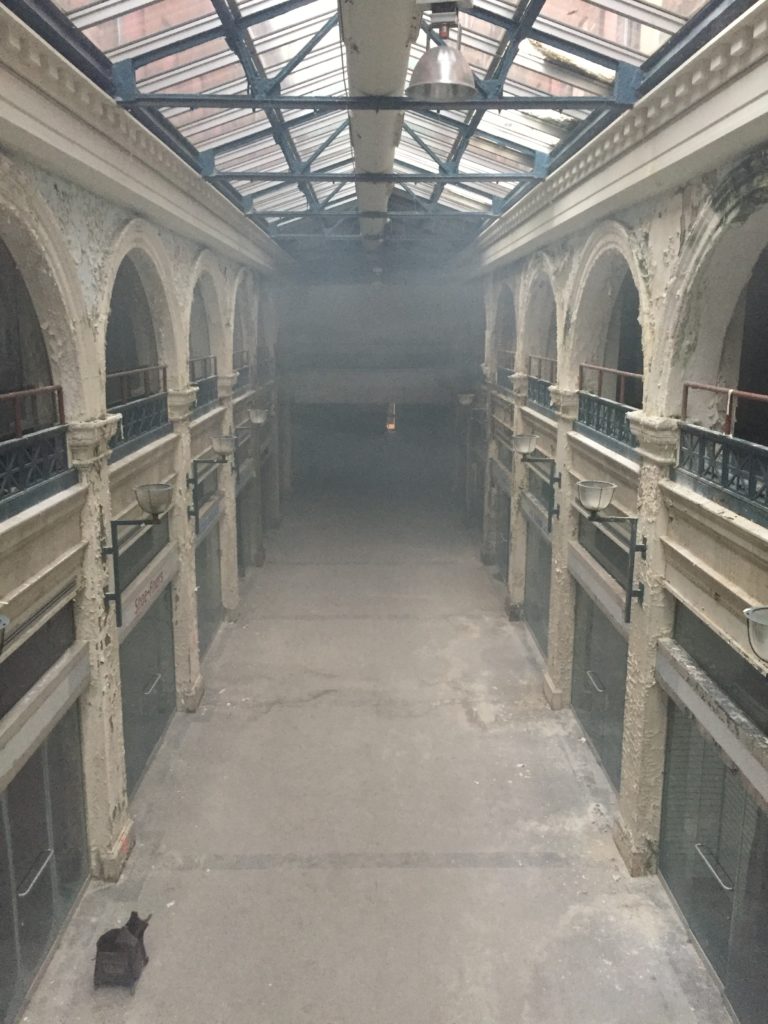 No development project has gotten Daytonians more excited recently than the proposed restoration of the Dayton Arcade. The seven building complex*, with its rich history, architectural flourishes, and central downtown location, has no match in the region. But at the same time, many of those people are still less than certain it will actually get off the ground, given that they’ve been burned by the promises of other proposals to revive the vacant complex in the past.
No development project has gotten Daytonians more excited recently than the proposed restoration of the Dayton Arcade. The seven building complex*, with its rich history, architectural flourishes, and central downtown location, has no match in the region. But at the same time, many of those people are still less than certain it will actually get off the ground, given that they’ve been burned by the promises of other proposals to revive the vacant complex in the past.
But there’s no denying that the current redevelopment project is by far the closest we’ve come since the Arcade shut its doors in the early 1990s. The companies involved are Miller-Valentine, a major local presence in commercial real estate and development, and Cross Street Partners, a Baltimore-based firm with expertise in just this type of historic adaptive reuse. In other words, if anyone can pull this off, it’s these guys. (And if they can’t, the Arcade probably won’t ever see new life.) The current development team is also much farther along with its financing and is utilizing a diverse mix of funding sources that just might be able to make a reborn Arcade a reality. Although gaps still remain, most of the major players within the companies and the city of Dayton appear cautiously optimistic. Let’s take a look at the timeline, what we know about the financing, and the prospects for the project finally moving forward.
The current project was announced in January 2016, when the city signed a memorandum of understanding with Miller-Valentine and Cross Street Partners. Before then, Mayor Whaley had appointed an Arcade Task Force to recommend action on the complex that has languished in a state of limbo for over two decades. That task force, among other things, recommended that the city invest in emergency repairs so the water-leaking Arcade wouldn’t further deteriorate over the winter and push redevelopment costs even higher, so the city tapped Miller-Valentine for a $700,000 contract for stabilization work in 2015. This came after they also hired a firm to study the feasibility of demolishing the Arcade, which was found to cost somewhere between $8 million and $12 million, raising the stakes of the redevelopment puzzle.
The entire project was first reported to cost $72 million, but due to the Arcade’s condition that was more of an educated guess. In March 2017, it was announced that the City of Dayton would spend up to $1 million for “architectural, engineering, and demolition services” which would help determine a true cost of development for Miller-Valentine and Cross Street Partners. Subsequent predevelopment work has predictably discovered that the project will cost much more than initially anticipated, with a more recent estimate at “over $95 million.”
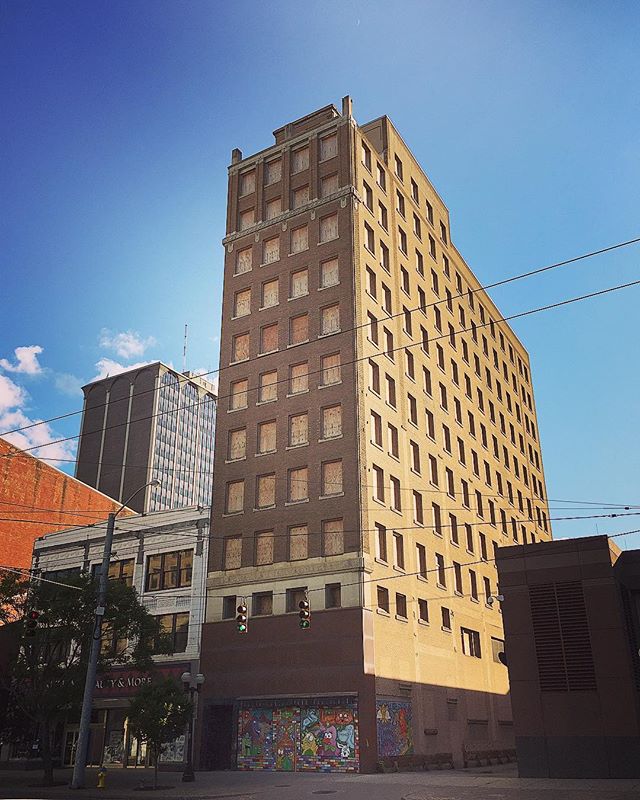
The Arcade project will be done in phases, with the first being the southern portion of the complex including the Commercial Building at the corner of Fourth and Ludlow, and the connected apartment buildings on both Fourth and Ludlow. The next phase involves the main rotunda, the McCrory Building, and the Lindsey Building. The third phase would tackle the Third Street building and attached annex.
In April 2017, it was reported that the developers had secured “north of $50 million” for the project. That same month the principal of Cross Street Partners said that they were “very close” to securing the final pieces of financing to move the project forward, including “more than $21 mllion in low-income housing tax credits, $9.7 million in federal historic tax credits, $2.5 million in federal funds pledged by the city (and) more than $16.5 million committed in loans from PNC bank.”
Then in June, the Arcade won $5 million in state historic preservation tax credits. At that time, one source called that award “the last major piece of the funding puzzle,” but despite the state coming to the Arcade itself to award the credits, there were no grand announcements from the developers that the project was a go. The Dayton Business Journal reported that two major components still needed included federal New Market Tax Credits and an incentive from JobsOhio, as well as securing all of the real estate for the Arcade buildings.
The city later applied for $1 million in Montgomery County “ED/GE” (Economic Development/Government Equity) funding for the Arcade, but in early December pulled its application, saying that “city staff wasn’t yet ready with projected construction costs and other preparatory work.” City of Dayton development director Ford Weber said that “this is our #1 economic development priority” and will request ED/GE funding in the spring round, when the county will have a larger pool $2 million to allocate.
On Nov. 28, 2017, the Dayton Arcade Innovation HUB, a collaboration between UD and The Entrepreneurs Center, applied for $2 million in federal funding through the Dayton Region Priority Development and Advocacy Committee.
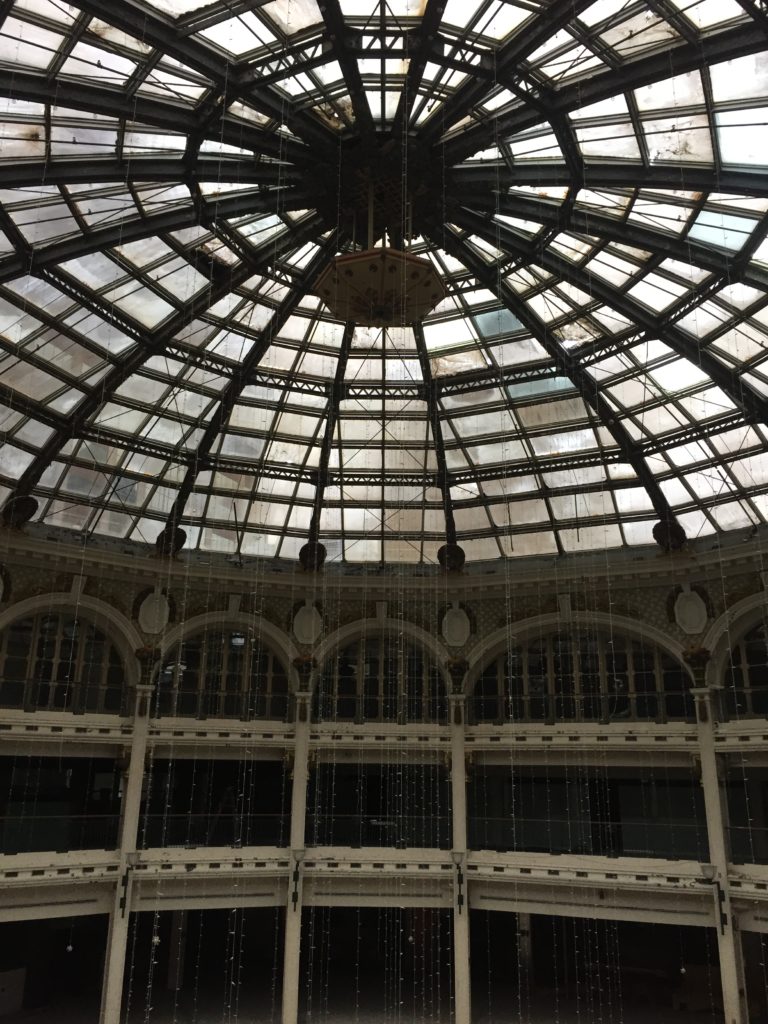 The project, along with others like it, was given a scare during federal tax reform discussions when the initial house bill scrapped the Federal Historic Preservation Tax Credit program. At the time Mayor Whaley was interviewed for a CNBC article and specifically mentioned the Arcade, saying that “If the HTC goes, it’s over.” Fortunately, the final version of the bill kept the tax credit, albeit with some alternations which are causing many developers to pick up their pace before the rules change.
The project, along with others like it, was given a scare during federal tax reform discussions when the initial house bill scrapped the Federal Historic Preservation Tax Credit program. At the time Mayor Whaley was interviewed for a CNBC article and specifically mentioned the Arcade, saying that “If the HTC goes, it’s over.” Fortunately, the final version of the bill kept the tax credit, albeit with some alternations which are causing many developers to pick up their pace before the rules change.
A redeveloped Arcade would be a true catalyst for the Central Business District, adding jobs and likely inspiring other projects nearby that might include the former Dayton Daily News site, the former Dayton Grand Hotel, and the former Reynolds and Reynolds buildings that are currently home to DPS administrative offices. And nearby, the Levitt Pavilion finally began construction this month which will bring thousands of people to the oft-neglected stretch of downtown blocks sometimes referred to as “The Nine.” City Manager Shelly Dickstein is mindful of the $10 million demolition cost staring the city in the face if the project doesn’t happen, and calls the Arcade “a catalytic project much like Riverscape, much like baseball, much like (the Schuster Center) was in the early 2000s.”
The University of Dayton is planning a major presence in the Arcade if it moves forward, envisioning putting “faculty and staff offices there, offering courses, and partnering in an ideation center intended to fuel economic growth and promote entrepreneurship.” Developers and university personnel have looked to Duke University as inspiration, as Duke’s shifting of some central operations and research to downtown Durham has played a major role in the resurgence of that downtown, once described as “moribund,” where today 95% of some 3 million square feet of office space is full, and 1,700 downtown residences are soon to be joined by 1,500 more. Back in Dayton, other tenants that have signed letters of intent to take space in the Arcade include The Entrepreneurs Center, Warped Wing, Boston Stoker, and the Dayton Visual Arts Center.
In December 2017, another major win came when the Arcade won an additional $4 million in state historic tax credits for the second phase of the project. But predictions that the future of the Arcade would be announced before the end of the year were not fulfilled.
There are certainly other financing negotiations going on behind the scenes as the team attempts to close the gap to reach its funding targets. When the $4 million in tax credits were announced, Dave Williams, a vice president at Miller-Valentine, optimistically said that “we can definitely see the finish line.” Daytonians hope that they actually cross that line soon.
A few more pictures taken by the author from inside (or on the roof of) the Dayton Arcade
*The boundaries of what’s considered the Arcade can vary; it’s often described as a five-building complex, usually omitting the McCrory and Lindsey Buildings.
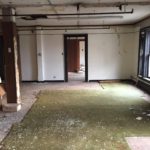
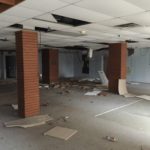

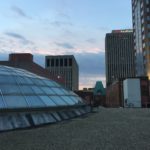
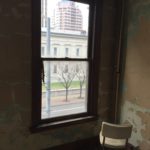
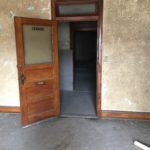
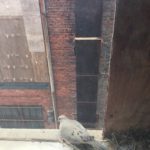
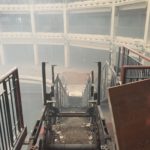

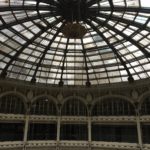
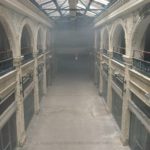
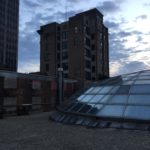
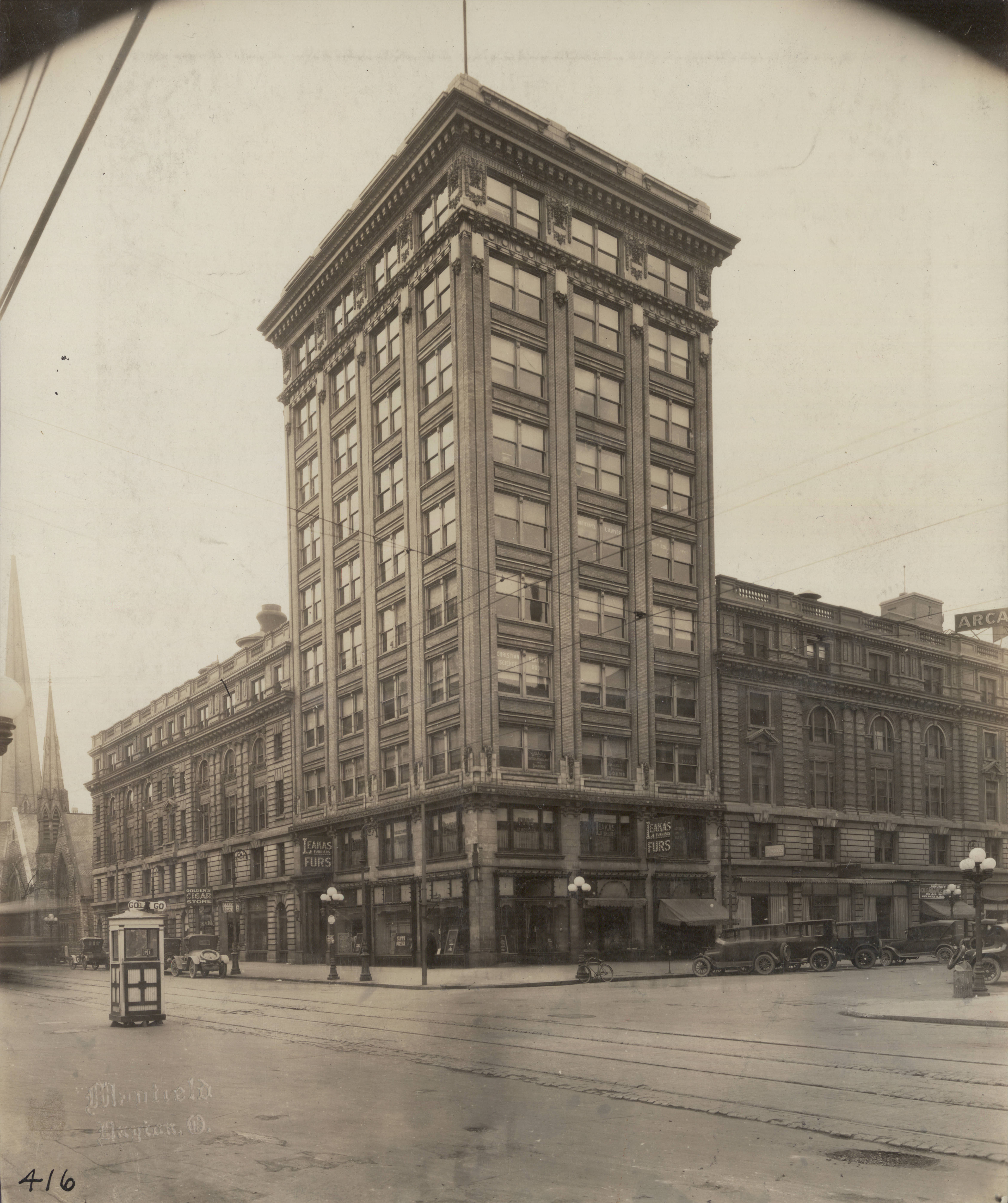
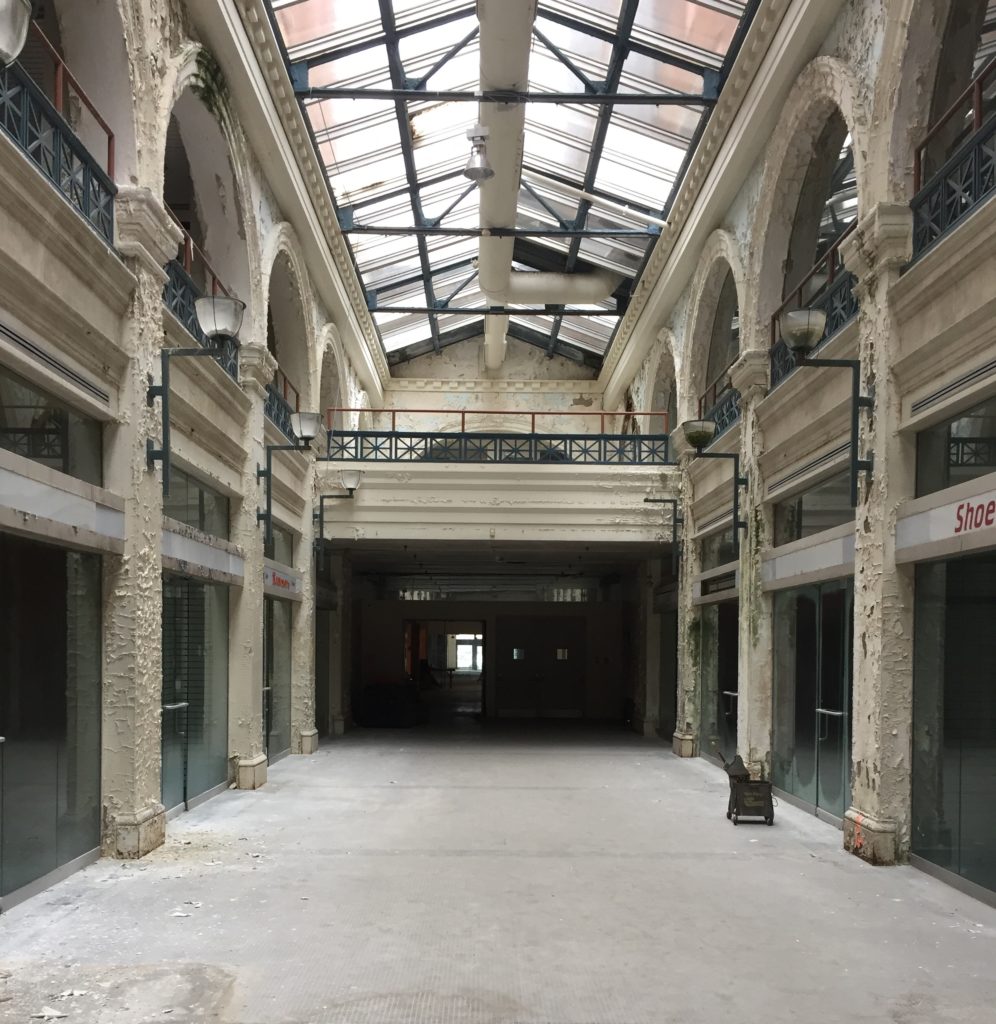
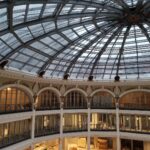
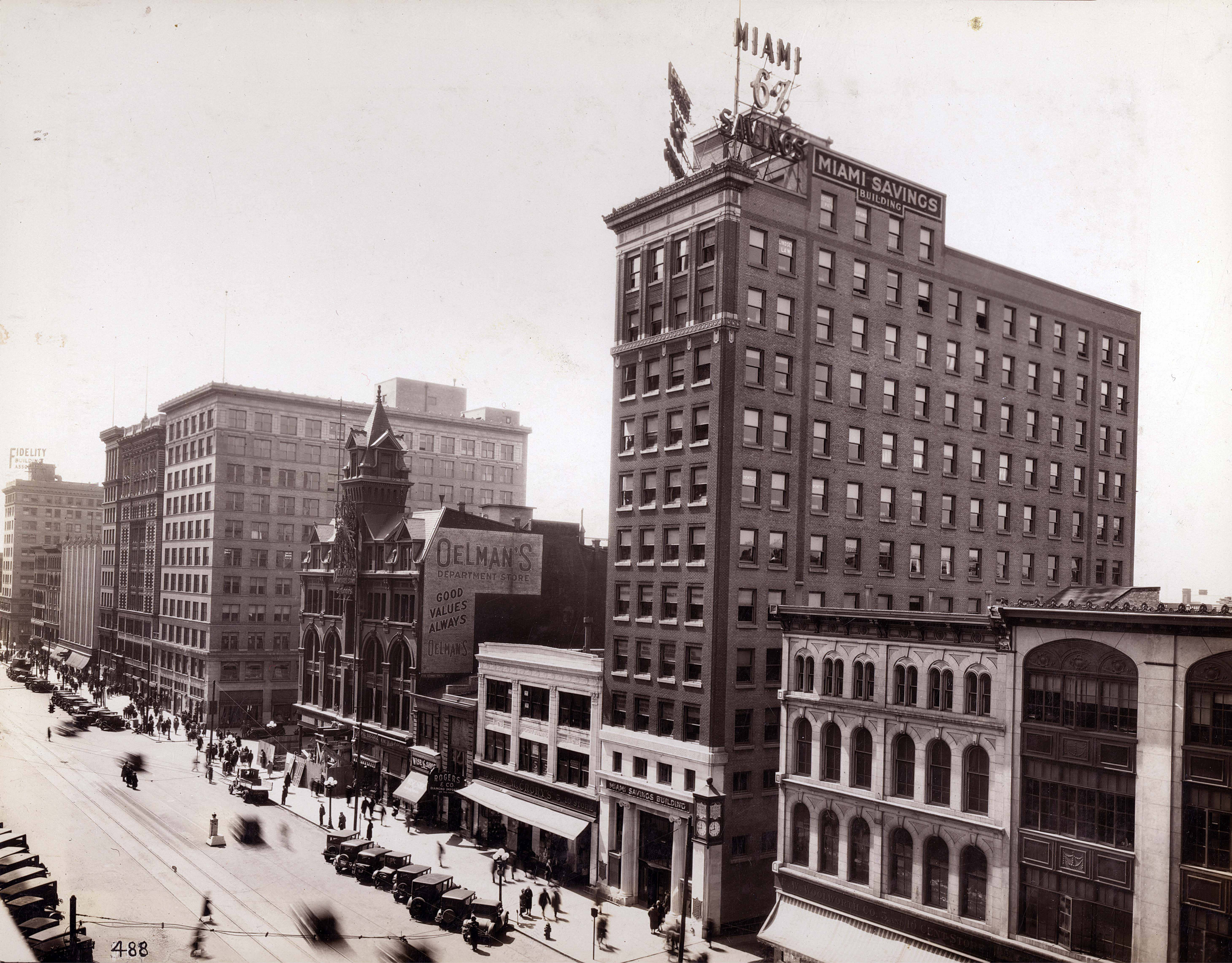
SUCH A BEAUTIFUL BUILDING I TRULY HOPE THIS PROJECT SEES COMPLETION. I REALLY WANT TO GO INSIDE ONE DAY AND SHOP AND ENJOY A MEAL OR ENTERTAINMENT. I MOVED TO DAYTON 17 YEARS AGO AND I HAVE BEEN WATCHING AND LISTENING WHAT THE PLANS FOR THIS WONDERFUL LANDMARK WOULD BE. IT WOULD BE A LOISS THAT WE COULD NEVER RECOVER FROM TO LOSE SUCH BESAUTY IN THE HEART OF DOWNTOWN. I WHOLEHEARTEDLY SUPPORT ANY EFFORTS TO RESTORE THIS GEM. I THINK IT WILL INBSPIRE NEW BUSINESS AND INTERST IN OUR LOVELY DOWNTOWN. WE ARE RICH IN HISTORY AND I HOPE WE CAN UTILIZE ASSETS LIKE THIS TO RECAPUTURE THEGLORY OF DAYS GONE BY WHEN DAYTON WAS KNOWN AS THE GEM CITY AND ATTRACTED GIFTED ARTISTS AND PATRONS OF THE ARTS. I WOULD LOVE TO SEE US BEOME A DESTINATION PLACE WHERE PEOPLE COME TO VISIT AND APPRECIATE THE BEAUTY OF THIS ARCHITECTURE AND REALIZE WHAT A NATIONAL TREASURE WE OWN. PROTECT THIS GRAND BUILDING LOVE IT GIVE IT NEW LIFE. BE PROUD OF OURCITY.